According to Gartner, marketing technology now accounts for 29% of the total marketing budget. That’s currently the single largest area of marketing investment, greater than talent (24%), paid media (23%), and agencies (23%).
Scott Brinker started mapping the marketing technology landscape in 2011, with 150 marketing technology solutions available to marketers. In 2018, he released an updated graphic with a whopping 6,829 marketing technologies. The size of the 2018 marketing technology landscape was equivalent to all of the landscapes from 2011 to 2016 put together. I’m speaking next month at the MarTech conference when Scott releases the 2019 installment.
Many marketing tech stacks have grown reactively over time, bolting on specialized products serving specialized needs. Some technologies are niche and others are large walled gardens. We’re in the awkward adolescent stage of marketing technology, so companies are continually re-evaluating what works and what doesn’t. But, left unchecked, the stack can grow out of control.
Eric Holtzclaw recently observed that marketers are becoming “stack managers”:
“Somewhere along the way, marketers became stack managers: shadow IT experts who spend more time on technology implementation than messaging, creative development or customer research … For some, the job is ‘nothing but the stack.'”
And yet, the potential of all of this marketing technology will power new heights of messaging, creativity, and understanding the customer.
Here are a few related cartoons I’ve drawn over the years:
“The Marketing Dashboard” November 2018

“The Customer Journey” September 2016
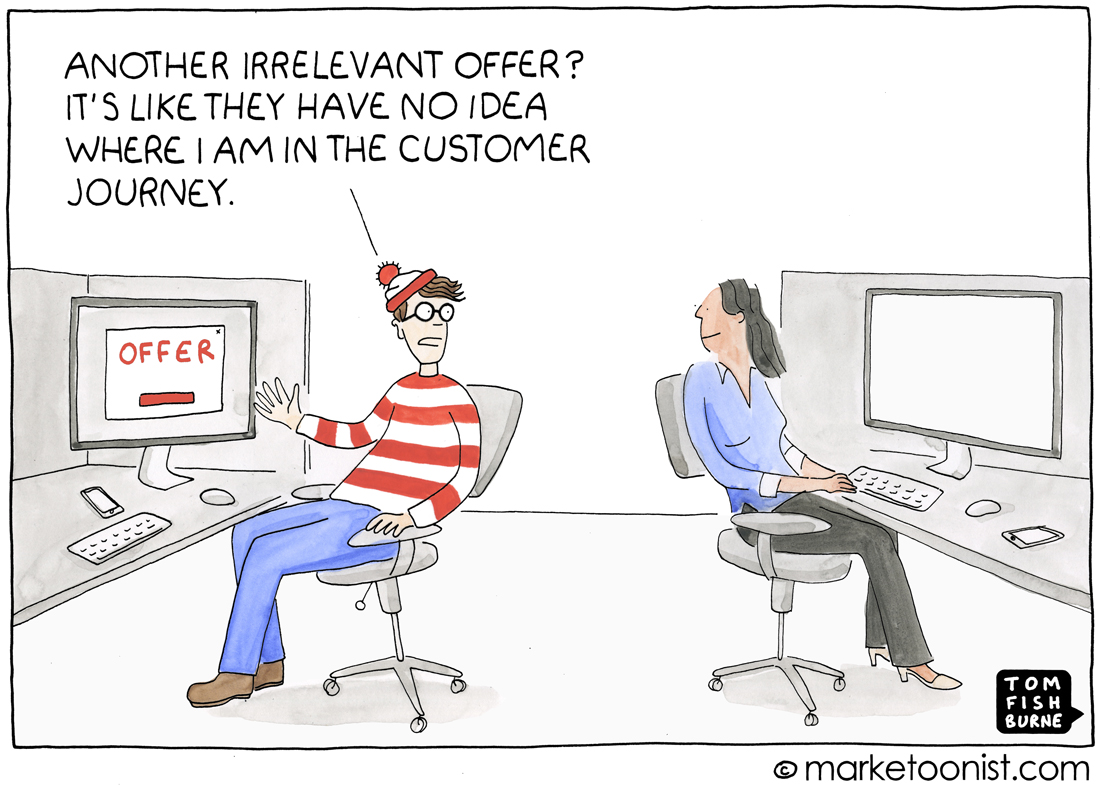
“Artificial Intelligence” September 2017
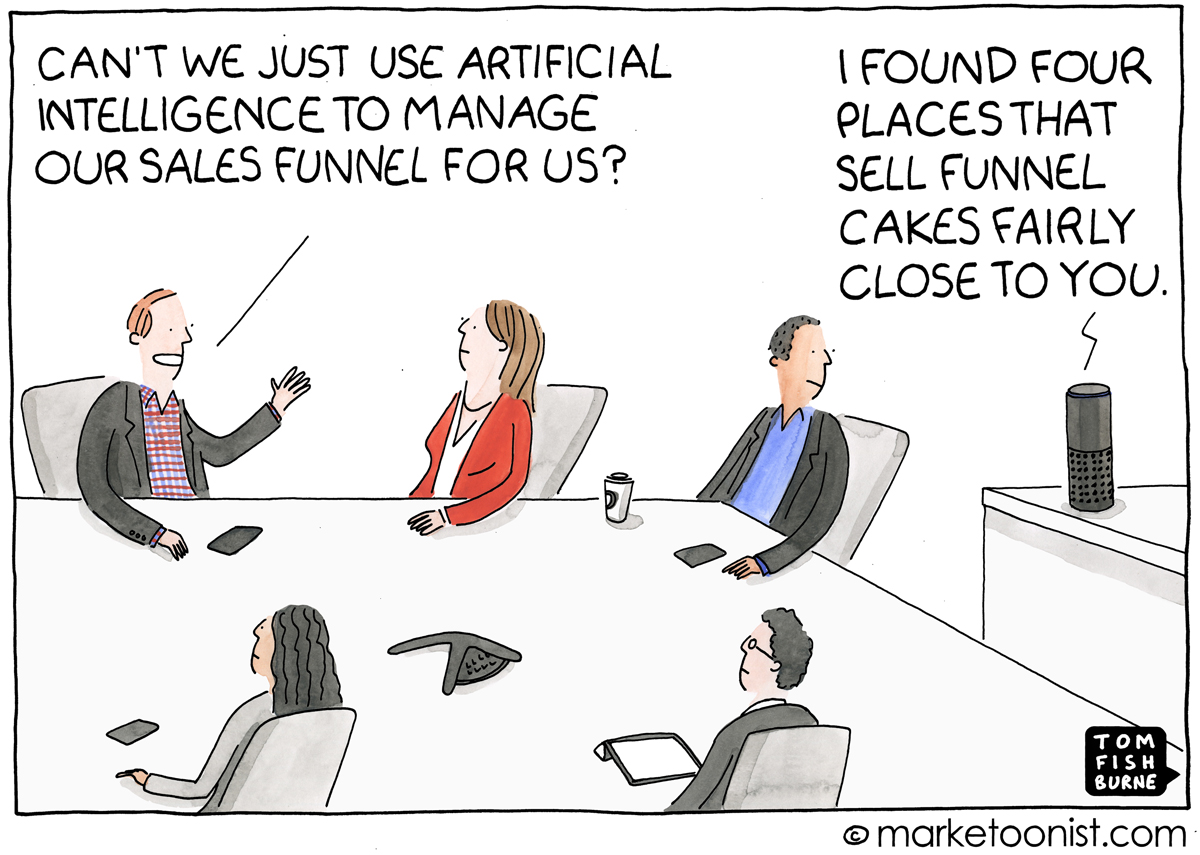
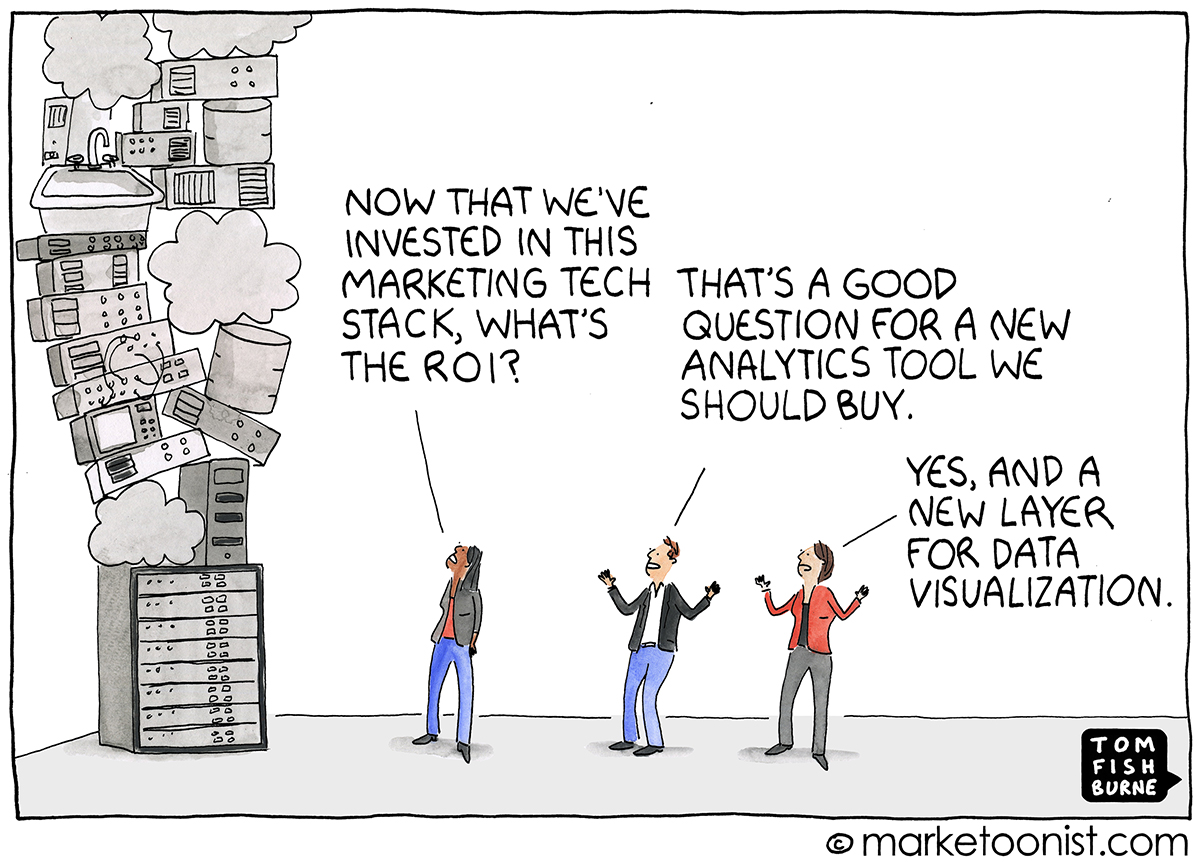
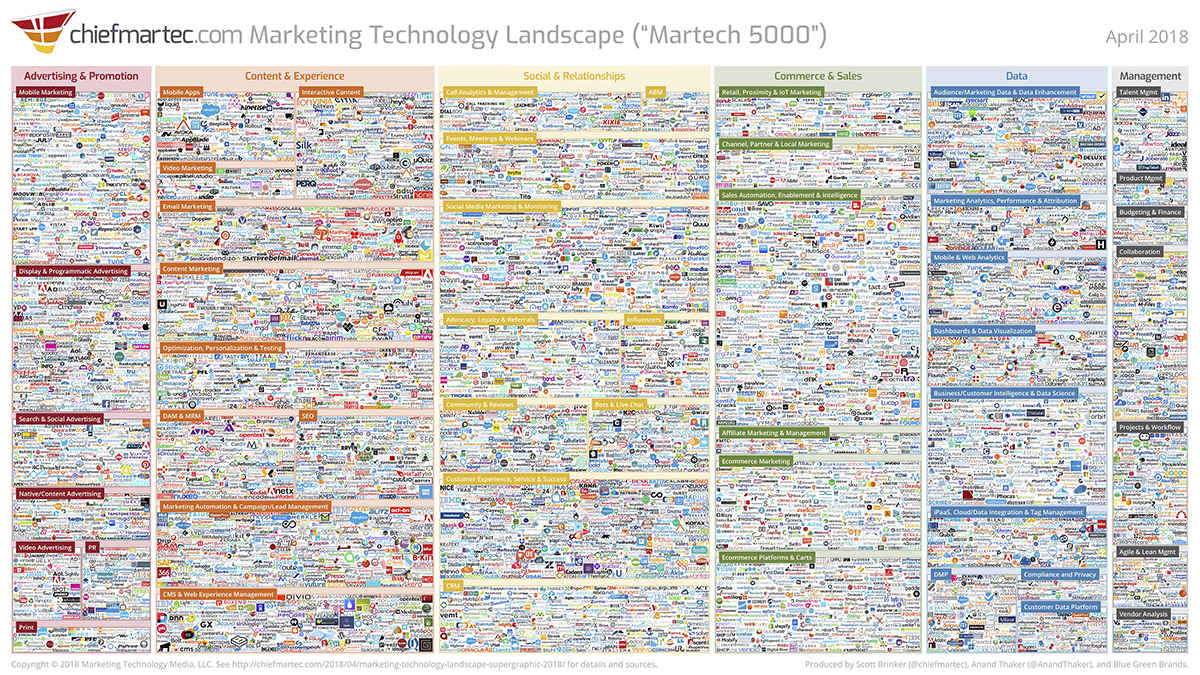

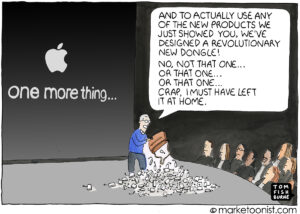
Amer Shallah says
This cartoon should be on the billboard of Martech Conference